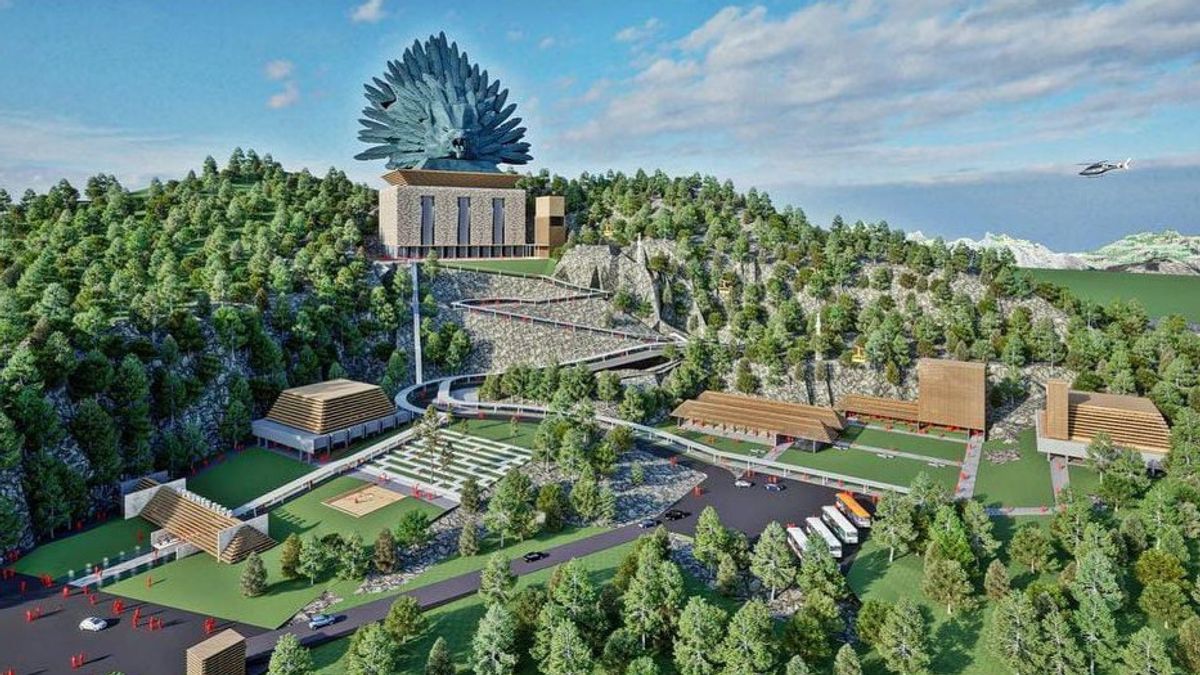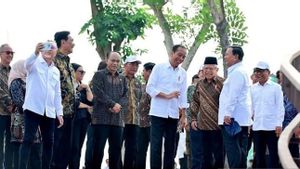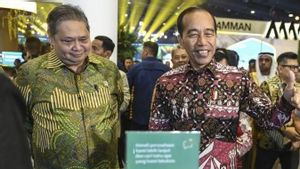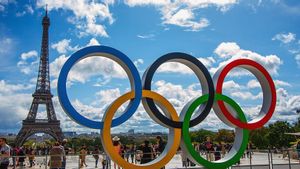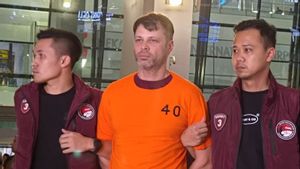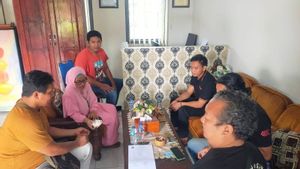JAKARTA The magnificent project of the Reog Monument and the Ponorogo Civilization Museum (MRMP) was reported by their own citizens to the Corruption Eradication Commission (KPK). This was done because the project allegedly cost the state up to Rp35 billion from the project value of Rp76 billion.
It was Adrian Fahmi, a Ponorogo resident who was willing to come all the way to the KPK to report alleged corruption in Ponorogo, especially related to the Reog Ponorogo megaproject which is located in Sampung District.
Adrian visited the KPK's Red and White Building in the Kuningan area, South Jakarta, Friday (9/8/2024). According to him, this report also targets officials from the Ponorogo Regency Government (Pemkab) and the private sector.
"For the private parties suspected of being involved, namely PT Widya Satria, which has an office in the city of Surabaya and the owner of PT, is the head of the East Java Provincial Government Regional Owned Enterprise (BUMD)," he said.
The Reog Monument and Ponorogo Museum were built in the western region of Ponorogo, precisely on the former mining or limestone mountain in the village of Sampung. The laying of the first stone of the MRMP was carried out on March 11, 2023, attended by the Governor of East Java Khofifah Indar Parawansa and the Regent of Ponorogo, Sugiri Sancoko.
The plan is for the Reog Ponorogo Monument to become the highest statue in Indonesia.
This monument is projected to have a height of 126 meters. The height to its peak will surpass the Garuda Wisnu Kencana (GWK) statue in Bali which measures 105 meters. In addition, this monument also uses the same copper material as used at the GWK monument in Bali.
Not only serving as a tourist destination, the Reog Ponorogo Monument will also be a source of knowledge about the history of Reog Ponorogo, which is being proposed as an intangible cultural heritage (WBTB) by UNESCO.
In addition, the people of Ponorogo and its surroundings are also expected to feel the great benefits of the existence of the Reog Reog Ponorogo Monument as a new icon. A public policy observer from Trisakti University, Trubus Rahadiansyah, questioned the urgency of the construction of the Reog Monument and the Ponorogo Civilization Museum.
Trubus said a number of reasons why the construction of the monument was actually not very important, especially if you look at the costs incurred of tens of billions.
First, Ponorogo is not an area that relies on the tourism sector as the main livelihood of its citizens. Quoting the National Population and Family Planning Agency (BKKBN), one of the potential SDA for Ponorogo village is agriculture and plantation, where most of the livelihoods of the farmers are.
Therefore, Trubus assessed that the construction of the Ponorogo MRMP was a place to waste the budget. In addition, the construction of the Ponorogo Monument located in the district will not significantly boost the tourism sector.
"Actually, it doesn't need to be that luxurious, it costs tens of billions. There is no need for a monument. If it's just an identity, it doesn't have to be too luxurious as it is now," Trubus told VOI.
The purpose of building the Reog Ponorogo Monument as an effort to preserve the communal dance is also inappropriate, according to Trubus.
SEE ALSO:
Instead of building a luxury MRMP project, Trubus said that the current implementation or performance should be prioritized to preserve the dance that Malaysia had claimed. That way, Ponorogo's reog opportunities are known to the wider community.
"There is no urgency to build this monument. Even though Reog is an icon of Ponorogo and is being registered as an unobjected cultural heritage of UNESCO, how come the performance is very rare," he explained.
The reog we know today as a traditional art from Ponorogo had experienced difficult times, especially during the Dutch and Japanese colonial times. This happened because the reog was considered an art that would have a detrimental influence on the invaders.
The Dutch government tried to divide the art of reog so as not to rebel. During the Japanese colonial period, the Ponorogo reog even disappeared. The artists did not appear because the reog performance was prohibited and feared it would function to mobilize the crowd.
The reog group grew again after Indonesia became independent, and there began to be a performance in 1950. But at that time the reog was widely used for political purposes.
In the period 1950 to 1959, many parties used the art of reog to attract mass supporters. PKI, NU, and PNI are parties that use reog in their political campaigns.
However, when the G-30 S and PKI events were declared a banned party, the reog arts again faced difficult times.
Many members of the Ponorogo reog assembly belonging to the PKI were killed. This massacre caused residents to play reog for fear that it was considered a PKI sympathizer.
Reog finally dared to appear in 1969, as an art show at the closing ceremony of PON VII in Surabaya. Reflecting on this experience, the Ponorogo government issued a regulation prohibiting the ownership of reog organizations by political parties.
The English, Chinese, Japanese, Arabic, and French versions are automatically generated by the AI. So there may still be inaccuracies in translating, please always see Indonesian as our main language. (system supported by DigitalSiber.id)
